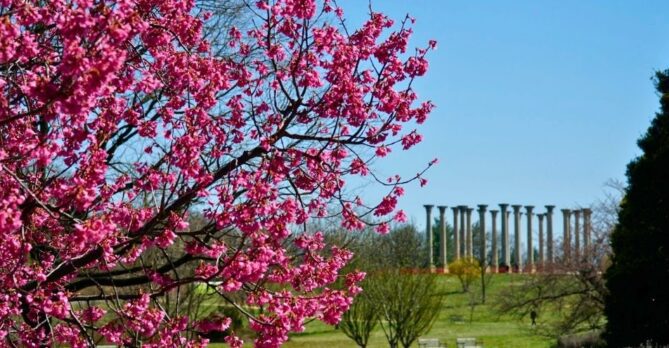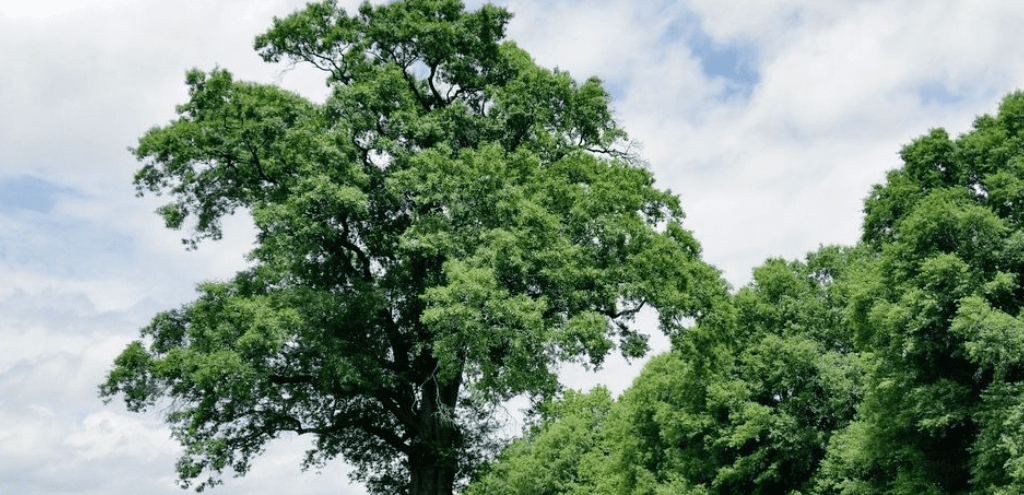
Oak trees are a common sight in many parts of the world. They are valued for their beauty, longevity, and ecological benefits. They are also a keystone species, meaning they are trees that entire ecosystems depend on for survival and habitat. Oak acorns provide food for more than 100 vertebrate species of wildlife, and an oak tree’s massive trunk and branches provide shelter for many birds and mammal species.
With over 450 unique species that live within the Quercus genus, identifying oak trees can seem like a daunting task – but don’t fret, we’re here to help you identify the most common oaks of DC like a professional! And if you’re interested in experiencing the trees personally, these trees are available through our residential planting program, RiverSmart Homes. You can also get up to $100 back for planting them yourself through our tree rebate program.
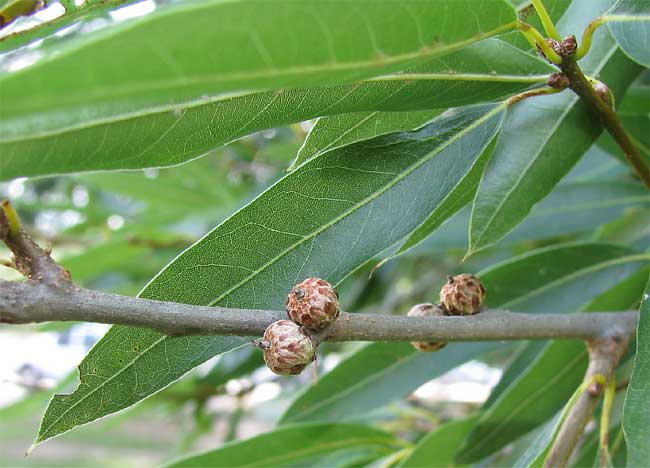 Willow Oak
Willow Oak
One of the easier trees to identify, the willow oak is a strong and beautiful tree that shares similarities with other oaks but is unique in many other ways that make it such an attractive tree to behold. The most significant particularity of the willow oak is the shape of its leaves, which are narrow and slender and very similar to that of the willow tree. The leaves have a glossy, lustrous finish on top and can be 2 to 5 inches long. They are not serrated and end with a hair-like tip at the end to help rainwater drain.
Not only is the willow oak a proud and stately urban tree, but it is a generous tree as well. After 15 years of growth, the willow oak drops its first acorns and goes on to become one of the most prolific producers of acorns that nourish all types of forest wildlife. Its bark is thick, dark, and shallowly furrowed and its twigs are slender and of a reddish-brown color. In fall, the leaves turn to a pale yellow color that complements nicely the red, brown and orange fall colors that can be seen around DC.
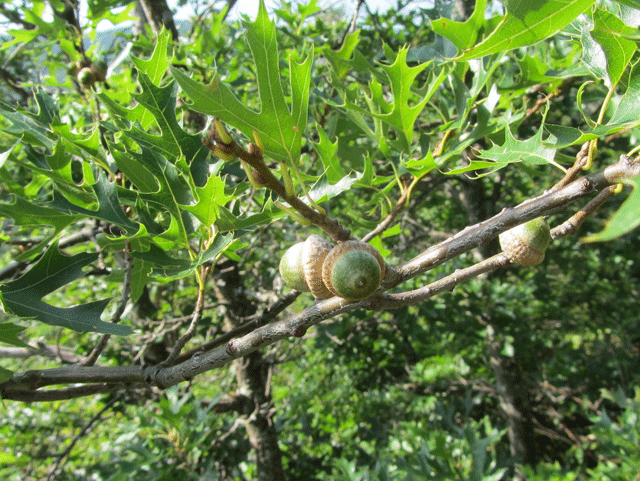
Pin Oak
Perhaps one of the most abundant oaks in the United States, the pin oak can be found in almost all corners of the lower 48 states and has even adapted well to its introduction in Australia and is now common there as well. One of the characteristics that make the pin oak a tree of choice for canopy coverage is its distinctive growth habit and handsome shape. The pin oak grows in an attractive pyramidal form with a straight and dominant trunk that firmly anchors the tree. The lower branches sweep out wide and droop slightly while the upper branches go from a horizontal to an upright angle as they reach the top.
Growing to a height of 60 to 70 feet, the pin oak is a medium-sized tree and has broad, lobed leaves. The leaves have deep sinuses and contain 5 to 7 lobes that typically have 3 to 4 bristles extending from the tip. In autumn, the leaves can turn anywhere from a bronze to a rustic red color. The bark is fairly smooth and tight, developing small fissures as the tree ages. The pin oak’s acorns are smaller than most other oaks and are topped by a thin cap and the flowers are small inconspicuous spheres extending from the branches.
 Northern Red Oak
Northern Red Oak
The northern red oak is a popular tree species in North America known for its beautiful fall foliage and strong wood. To identify a northern red oak, look for leaves with pointed lobes and a shiny, dark green color. The bark is often gray-brown and has a rough texture with deep furrows. The acorns produced by this tree are large with a shallow cap and can be found scattered around the base of the tree. Additionally, with dense leaf coverage and a typical height of almost 100 feet, the Northern red oak is one of the best shade trees DC has to offer on scorching afternoons.
 Swamp White Oak
Swamp White Oak
The swamp white oak is a beautiful shade tree that commonly reaches heights between 60 and 80 feet, though the record tree is 120 feet tall. Like most oaks, the tree has a spreading form that can extend broader than the tree is tall. The bark is gray-brown in color and deeply furrowed. True to being a member of the white oak (unofficial) sub-genus, the swamp white has rounded leaf margins, though more wavy than lobed. The leaves are simple, alternate, and have a distinctive shape – they are broadly obovate with a rounded base and 5-7 rounded lobes. And the Latin name ‘bicolor’ refers to the dramatic difference in color between the dark green top of the leaf and the pale matte white underside, turning yellow to reddish-brown in the fall. The swamp white oak produces acorns that are about 1 inch long and have a shallow cup. This tree is commonly found in wetlands, bottomlands, and along streams and rivers.
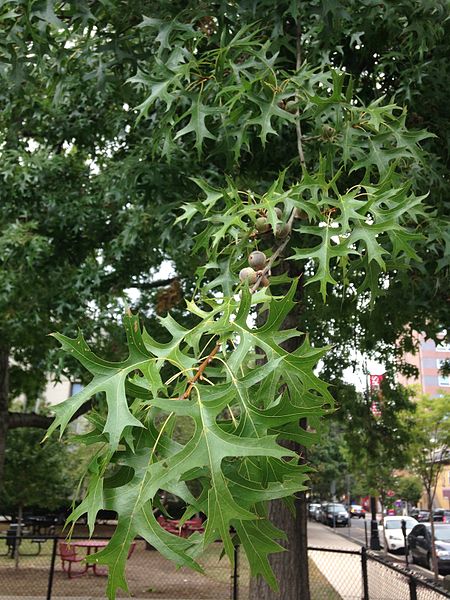
Scarlet Oak
Last, but certainly not least is the official tree of DC – the scarlet oak. The scarlet oak shares many similarities to its close cousin, the pin oak, but several key features make it easily identifiable. The scarlet oak’s acorn is larger at one half to one inch long and features a deep cup that covers almost half of the nut. The scarlet oak also features ascending branches that can form an open, rounded or irregular crown that looks markedly different from the horizontal and drooping branches of the pin oak.
The scarlet oak’s leaves are simple and oval-shaped with deep C-shaped cuts that create up to nine bristly lobes. The leaves are a bright and shiny green on top with a paler shaded underside and are usually three to seven inches long. The leaves’ autumn colors range from a subtle russet to the deep scarlet coloration the tree is famous for.


